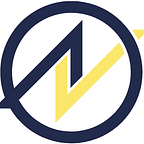Amoveo use-case: Crowdfunding via a Dominant Assurance Contract (DAC).
Amoveo is a platform with an array of potential use-cases, many of which are gradually being brought to life. Over the last several months, the community has been actively testing the p2p derivatives tool, which allows pairs of users to set up a new state channel together to bet against each other on whatever they want. One such month-long smart-contract was closed just days ago, making one of the participants 4.5 VEO richer.
In the meantime, a new Dominant Assurance Contract was created on the network by one of the community members, aimed at crowdsourcing VEO to fund a development of Amoveo’s light node front end UX.
Dominant Assurance Contracts
Originally, DACs were proposed by Alex Tabarrok in 1996 as a modified form of assurance contracts, which have recently gained popularity due to the emergence of crowdfunding organisations like Kickstarter. Such platforms only take users’ money if a certain goal is reached, thus removing the investors’ fear of their contributions being wasted if not enough money to fund the creation of a public good was raised.
At the time of writing, 161,120 projects were funded through Kickstarter, raising a total of just over $4 billion between them. Evidently, the system generally works quite well. Nevertheless, if you don’t really believe that other people will put their money towards a production of a certain public good, there is essentially no reason for you to pledge anything. In the same way, if you decide not to pledge, others might refrain from doing so too. On top of that, this model is fundamentally flawed by the so-called free-rider problem, which occurs when people who benefit from public goods don’t pay for them, and results in the lack of those goods.
In contrast, if a dominant assurance contract is implemented, an entrepreneur will only receive the people’s money if a certain goal is reached, but will also be obliged to reward donors if that goal wasn’t met. This makes contributing funds a dominant, most rational and beneficial strategy that outperforms free-riding.
This idea was recently trialed on Quora by Jameson Quinn. In the post, he offered to multiply any pledger’s donation to The Center of Election Science if at least 20 people would be willing to donate $60 or more. In case there would be less than 20 pledgers, he offered each person who did donate $5, essentially for nothing. The experiment was a nail-biting success, with the final 3 pledgers coming in the last 30 minutes of the campaign.
Implementations in Amoveo
In the case of Amoveo, the better looking and more intuitive front end UX of a light node interface can certainly attract new users and therefore make VEO tokens more valuable in the long run. Thus, users that decide to contribute will inevitably profit by either receiving their contribution back along with an interest rate, or funding the community’s development, which in turn means that the value of their VEO tokens will increase. The free-riders, however, won’t profit on money and will be less likely to get a public good that will benefit them. If the interface will not get funded, the free-riders are still going to be worse off than the donors, having missed an opportunity to increase the value of VEO.
Amoveo is a very flexible platform, so dominant assurance contracts can be set up in a variety of ways. For instance, the very first DAC created on Amoveo was for the Arabic translation of the project’s whitepaper and it was implemented in a form of a prediction market on whether the translation will be completed or not. Zack Hess, the project’s founder, acted as a market maker by providing initial liquidity and fixing the odds at 1:9. Those wishing to invest in the translation were encouraged to bet on the whitepaper not being translated, paying the price of at least 90.
In this way, either the Arabic translation would have been funded and completed, or users that bet against it being done would have received their money back along with a 10% interest.
However, the new DAC for the light node’s front end UX is done differently. It came to be as a result of lengthy discussions between Zack and Eric Arsenault, a community member who proposed the idea of streamlining the current UX. Currently, the new Amoveo-style DACs consist of three elements: the scope of work in a form of a shared PDF file with mock-up designs, an oracle question (oracle ID: FxQ1iml2oep2eXzrtu7+b5hG5WgU5gTPg5jK6dUsCek=) and bets with individuals made using the p2p derivatives functionality of the light node. Crucially, the latter replaced a prediction market in this scenario.
In this case, there are no set rules about odds and bet amounts, everything is decided personally between Eric and another community member wishing to participate. Odds depend on particular agreements, with 1:10 and 1:20 having been suggested. Similar to the previous DAC implementation, people are betting against the front end UX being re-worked, essentially funding the project.
It is worth mentioning that this is probably not even the final form of Amoveo-based dominant assurance contracts. The elements described above are preliminary, the community is learning as it goes along and tries different things. In the future, crowdfunding campaigns on Amoveo might have completely different elements to them, but the important thing is that they clearly exemplify the potential versatility of the platform and, if successful, will set an important precedent of a decentralized community funding its own development from within.
In part, those campaigns were also created as a response to some members of the community proposing to use a third-party service designed to incentivise and monetise the community work. Zack Hess stated: “If we aren’t willing to use Amoveo to build Amoveo, then how can we convince anyone else to use Amoveo?”
Oracle ID: FxQ1iml2oep2eXzrtu7+b5hG5WgU5gTPg5jK6dUsCek=
